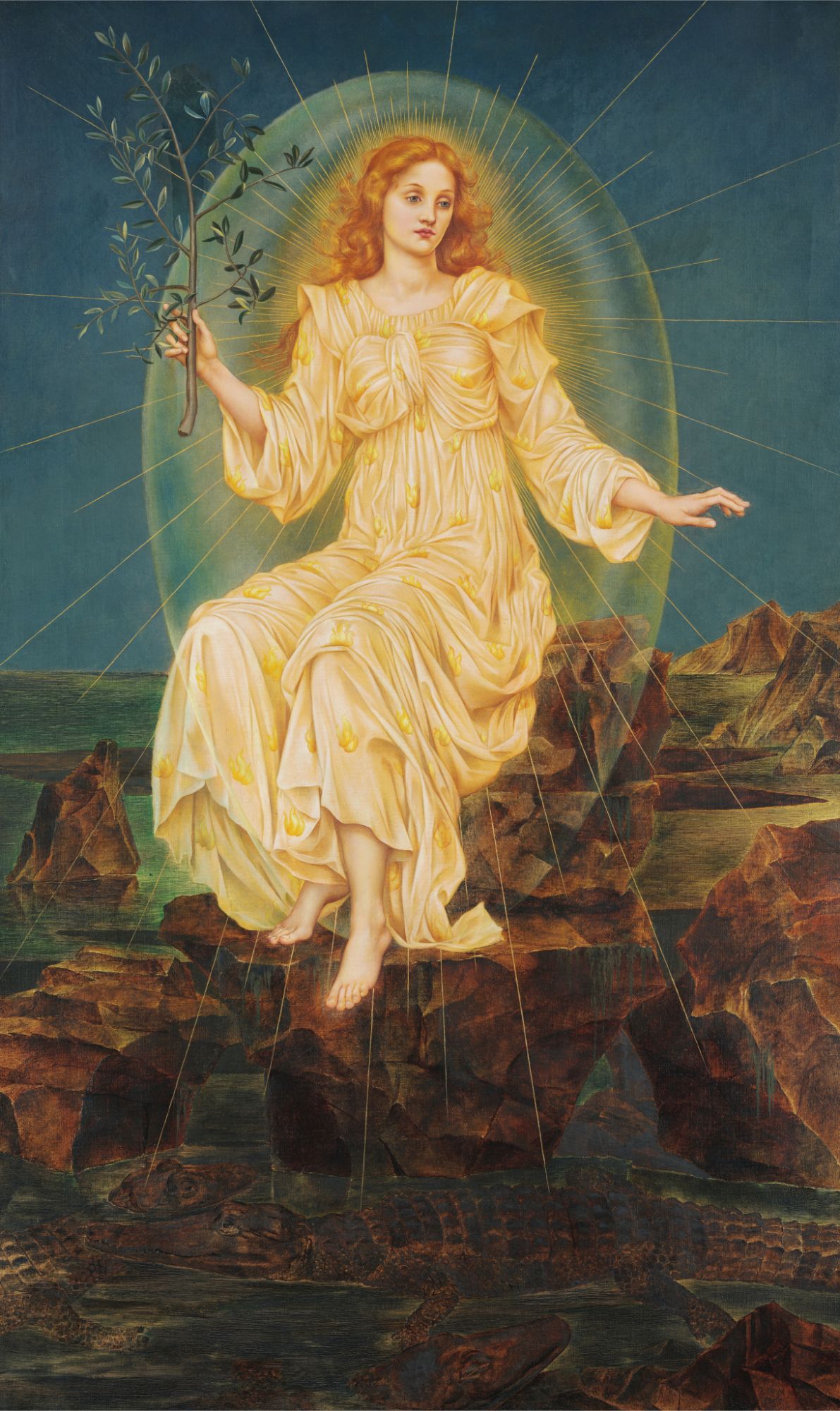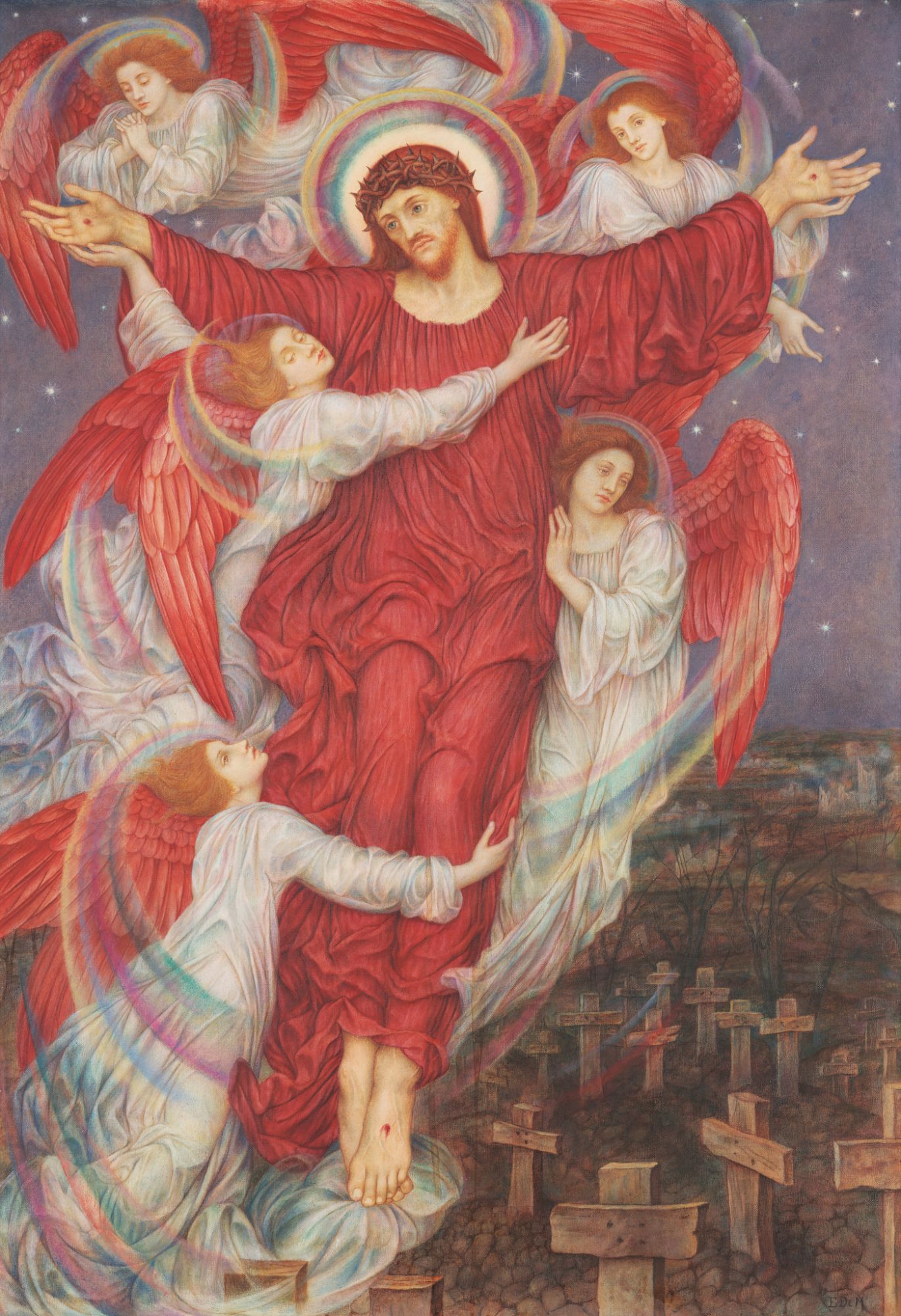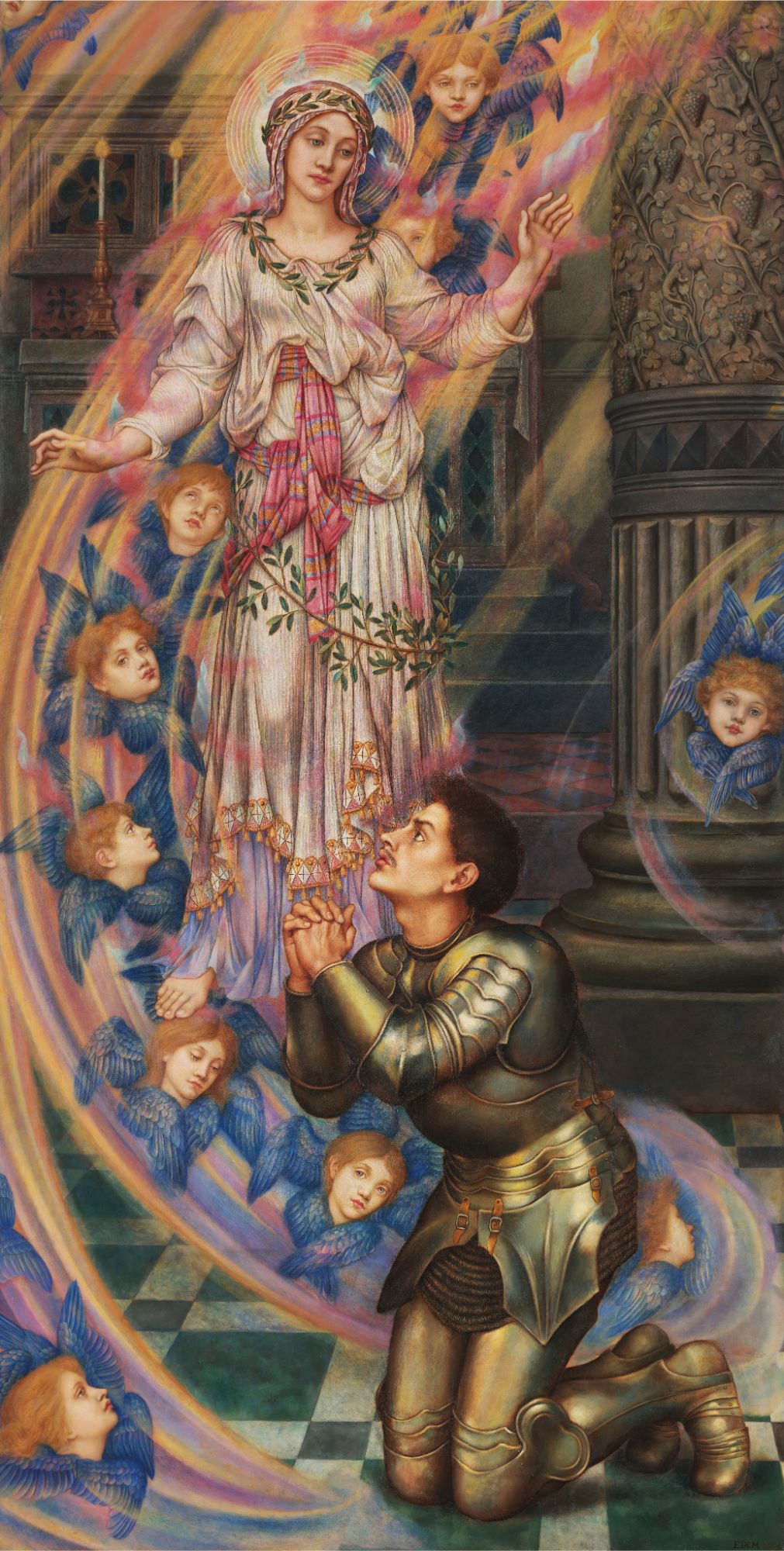
About the Exhibition
Living through a global pandemic changed the world forever in many ways. One positive outcome was that we all united with a sense of hope for better days ahead.
Evelyn De Morgan was born during the Crimean War (1853-56), at a time when life in Victorian Britain was both full of the spirit of progress but dogged by short-lived military conflicts. She also lived through the Boer Wars and First World War.
The outbreak of the First World War, which brought daily reports from the frontline and the huge death toll, deeply affected De Morgan. Possessing a strong belief that art should have a moral purpose, De Morgan fashioned an artistic response to war using a deliberate synthesis of academic style, symbol and allegory to convey pacifist meanings and values. Her artwork became cathartic, allowing her a platform to present her profound fears and her hope that better days would come. These paintings resonate deeply with our own experience of living through a global crisis.
Evelyn hoped her art would act as pacifist propaganda, but also used it to help practically towards the war effort, by holding an exhibition at her studio in London in 1916 to raise funds for the Red Cross.

Lux in Tenebris (1895) is typical of Evelyn’s depiction of peace as an ethereal female figure in loose, classical drapery. She never depicted the horrors of fighting directly, rather used her pictures as a metaphor of hope and salvation in a world of conflict.

Preparatory study for Our Lady of Peace (1902). The innocence of the putti gazing skyward at Our Lady of Peace in the final painting, represents the innocence of those called up to fight. Evelyn captured the naivety and purity exactly in her delicate sketches of child models which she made in preparation for her final canvas.

Caption: The Red Cross (1914). In a billowing, blood-red cloak, Christ floats over a field of the slain, supported by a band of angels, to take away the sins of killers and to watch over the souls of the departed as they ascend to heaven.
The result of this exhibition was a body of work which not only acts as a powerful expression of the effects of conflict upon De Morgan and fellow Britons, but can also be understood as a universal statement about the anxiety, grief and ultimately hope that accompany any war.
The prismatic pictures filled De Morgan’s 1916 exhibition with rainbows, much like our homes, shops, and hospitals were emblazoned with this universal symbol of hope during the Coronavirus pandemic.
Our Lady of Peace (1907). The anguish and hope of the nation are embodied in the young soldier kneeling in prayer to the classically draped figure of peace. It is unclear whether he is on his way to battle, begging for his safe return and the return to peace, or whether the painting is a premonition of him giving thanks once the war is over.
Alongside information about Evelyn De Morgan and her artworks prepared by curators and art historians will be the stories of local people who have clung to hope through the pandemic. De Morgan has teamed up with the following organisations to develop this exhibition.
-
-
Blind Veterans UK, the charity that provides lifelong support to veterans with severe sight loss, are ensuring the exhibition is accessible to those with a disability. Further to this, a number of their beneficiaries have provided their story of ‘war and hope’, to be displayed alongside the art at the exhibition. If you or someone you know is entitled to Blind Veterans UK’s free support then please call 0800 389 7979 or visit blindveterans.org.uk.
-
Burnley High School
-
Child Action North West is a charity with a Big Heart. The work we do helps to strengthen individuals, families and communities so that children and young people can lead healthy and meaningful lives, with the opportunity to succeed in school, grow up to enjoy healthy relationships, to have access to training and employment opportunities and to be successful.
-
Cruse Bereavement Care is the leading national charity for bereaved people in England, Wales and Northern Ireland. Cruse offers support, advice and information to children, young people and adults when someone dies, and works to enhance societies care of bereaved people. Cruse offers telephone and website support and, until Covid-19, had been providing face to face support for 60 years. It has a free National Helpline (0808 808 1677), local services, an online chat service, and a website specifically for children and young people called Hope Again. Its services are provided by trained volunteers and are confidential and free. Cruse also provides training and consultancy for external organisations and for those who may encounter bereaved people in the course of their work.
-
NHS Staff working on the Acute Stroke Ward at Royal Blackburn Hospital
-
Syrian refugees living in Lancashire supported by Lancashire County Council
-
We look forward to welcoming you.
‘De Morgan’s works could have been painted in response to the pandemic. S.O.S. is one painting in particular that resonates so profoundly with our collective experience of needing hope in the face of crisis. It depicts a woman in white robes reaching out towards a rainbow, while demons snap at her ankles. De Morgan used the demons to represent the First World War, but today we can see those demons as the pandemic, and the woman as all of us reaching towards the rainbow’.
Sarah Hardy, Curator, The De Morgan Foundation
‘We are delighted to bring the work of an inspirational female artist from an exclusive collection to Towneley Hall. Due to traditional collecting of male artists, only 3% of Towneley’s vast collection is by a female artist so this exhibition helps reset the balance.’
Alison Cooper, Towneley Hall
‘Arts and crafts have played such an important role in the rehabilitation of our veterans from the First World War to the present day so we are delighted to be involved with the exhibition. After the last year and a half I am sure people will be inspired by the hope represented not only in the magnificent art but also our veterans’ stories.’
Blind Veterans UK CEO, Major General (Rtd) Nick Caplin CB
‘The art work in the exhibition is inspirational and hopeful and involving the young people we support will provide a focus to show how in even the most difficult of times there is always hope and that we can all overcome difficulties to achieve amazing things. We are so proud to be involved in such a positive exhibition and the opportunities it provides to young people who have been so adversely affected by the pandemic.’
Sue Cotton, Chief Executive Officer, Child Action North West
‘Art can provide a great medium to allow people to recognise and express their emotions. Just like grief, the interpretation of art will be unique for each individual, seeing ‘in’ the artwork what is thought provoking to them.’
Tracy Shutt, Operations Manager, Cruse Bereavement Care
Donate
We rely on your generous support to care for and display this wonderful collection


